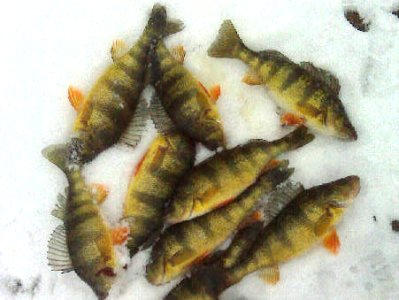
The yellow perch is a small but colorful fish found in the Mid Atlantic and throughout much of North America. Like several other fish of the region, it has traditional importance among freshwater fishing enthusiasts.
The respect that anglers have for yellow perch is due, in part, to the species’ activity during cold weather. During the winter, yellow perch are caught in areas where ice fishing can be done safely.
In less frigid parts of the Mid Atlantic, winter fishing occurs on larger rivers including the Delaware, Susquehanna, Chester, Wye, Patapsco, Nanticoke, Pocomoke, and others.
By early spring, yellow perch move father upriver into small non-tidal creeks and streams throughout the Mid Atlantic. Here they are caught by anglers who are eager to begin the fishing season. Once located, they are easy to catch and can be caught using artificial lures, live baits, or combinations of the two.
In addition to being found in rivers and creeks, yellow perch inhabit many of the lakes, reservoirs, and ponds of the region. Landlocked yellow perch follow a life cycle that is similar to their river counterparts. In spring, they also congregate to spawn and are targeted by anglers during this period.
After spawning occurs, yellow perch disperse. Depending on local habitats, anglers may experience sporadic fishing success or may not encounter them at all until the following winter-spring season. In some areas, a less productive run occurs in the fall, when perch begin moving downstream.
Yellow perch are usually small (less than 1 pound) although trophy catches can weigh in at 2-3 pounds. Although they are difficult to scale and clean, yellow perch make excellent table fare. Fried perch roe (eggs) is considered to be a treat.